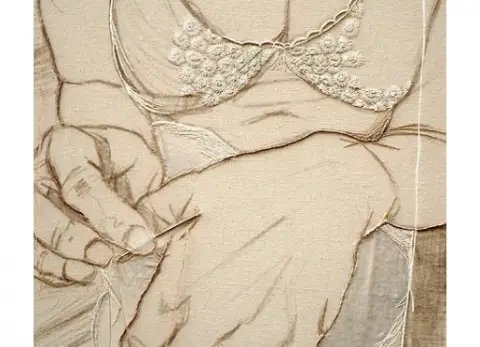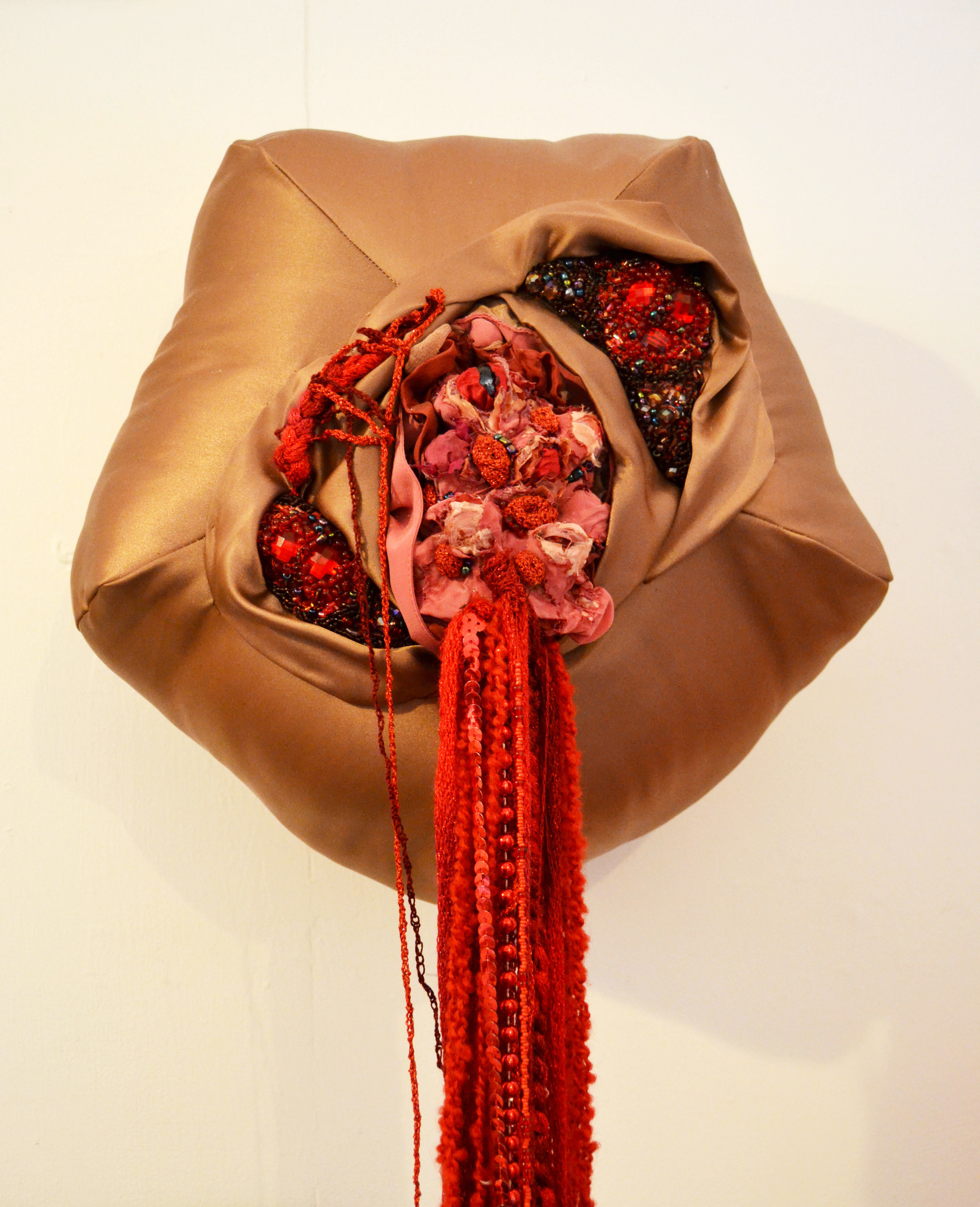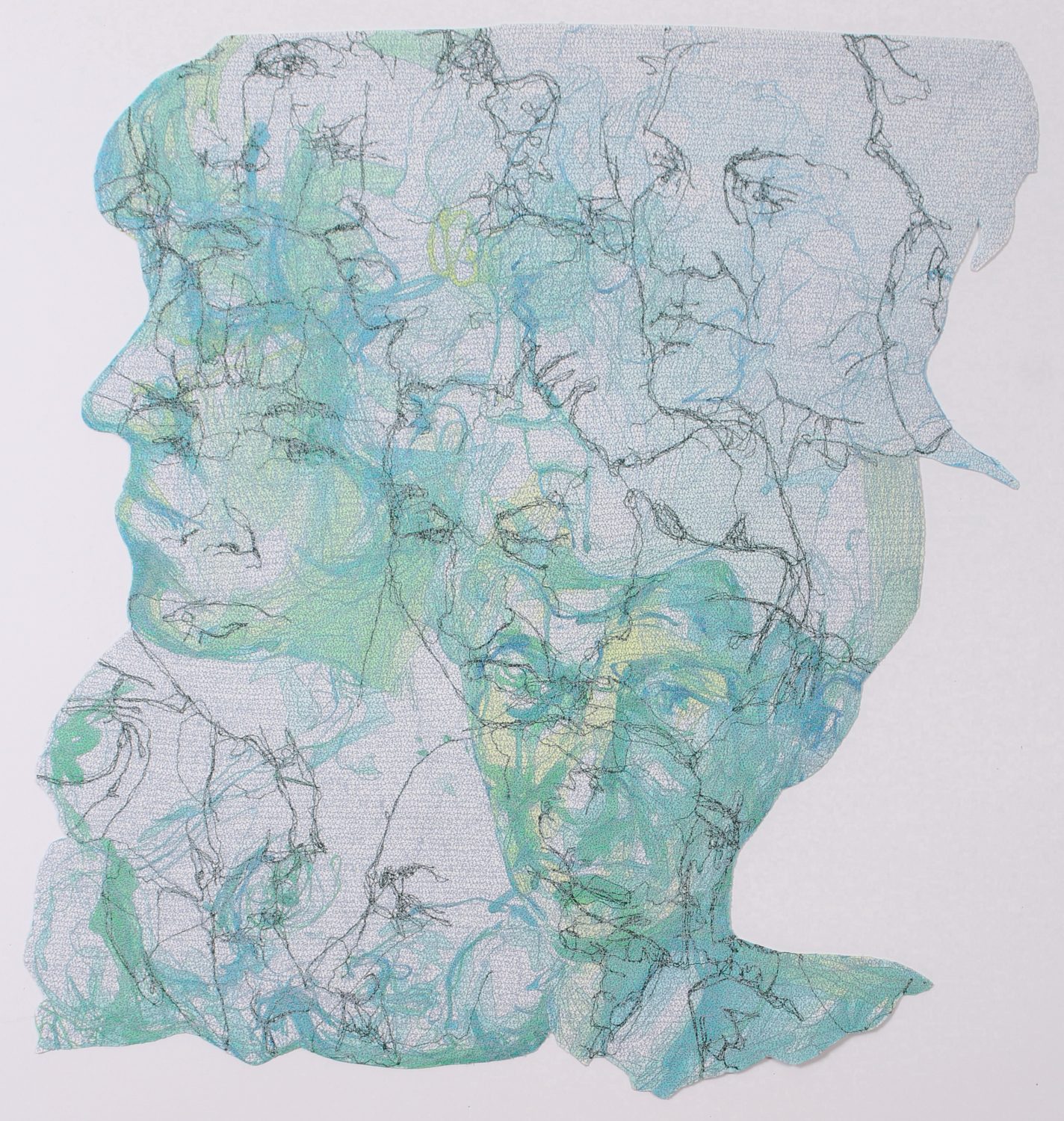
Welcome to Future Heirlooms, where we interview textile artists and explore creativity and technique.
I recently saw the amazing work of Italian artist Ilaria Margutti for the first time in the current exhibit Mending=Art, part of Fiber Philadelphia. (read my review here.) Ilaria’s work jumps off the wall and crawls into you. Her drawing style is expressive and has a wonderful sense of energy. The close cropping, strong lines, layers and layers of textures, paired with the powerful imagery of her portraits makes for a very strong and evocative visual. As soon as I saw it I knew I wanted to know more and I am so glad I seeked her out. Her work is actually driven by a very positive force, inspired by how our own scars tell our stories and how beautiful imperfection can be. She also celebrates how we can create and build who we are through the stitches of our lives.
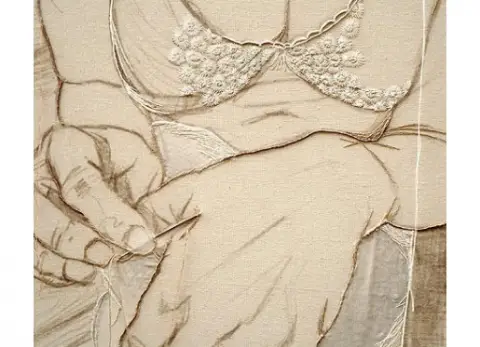
Her training as a painter is evident in her incredible line quality. Personally I really appreciate how she blends her skills and techniques with the needle along with her skill of drawing. Ilaria’s work combines machine and hand sewing when asked about this she says “They both are a necessary process in my work. The hand embroidery is the link to the identity that comes from the past, the machine is part of this one … Enjoy learning more about this very interesting artist.
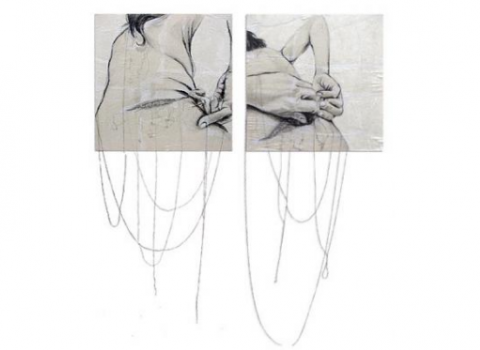
DISCLOSURE: Ilaria’s work has a lot of nudity so be prepared if you scroll down. Also please forgive the fact that Ilaria is limited in her English and so this has been translated a bit.
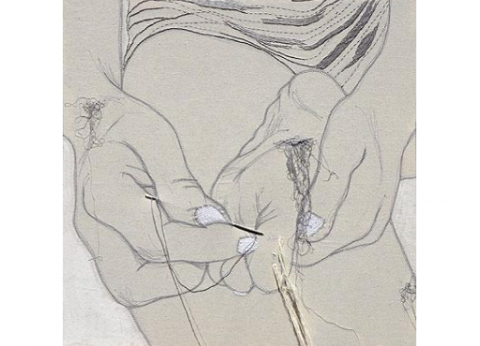
Introduce yourself in 2 sentences or less.
I always knew that I belonged in the artistic world and was always drawn to artistic language, all of the choices that I have made in my life have always been made thinking towards this.
Apart from being an artist I am an Art History teacher and in the past I have worked in the art restoration of paintings and antique furniture.
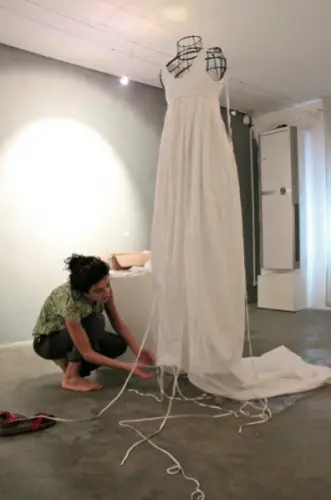
If you had to describe your work in 3 words what would they be?
Discipline, waiting, and freedom
I started painting when I was a child. I studied at The Academy of Fine Arts in Florence and since then have never stopped painting and experimenting in different techniques and languages. That is until the moment I found embroidery, which quickly came to be the technique that made the most sense with meaning of my poetry, my art.
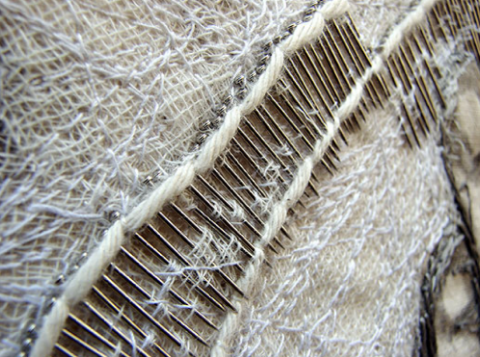
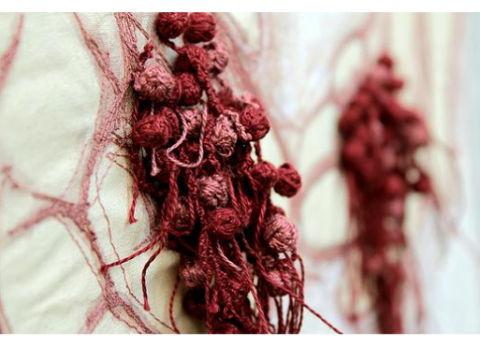

You are trained as a painter, how did you come to embroidery?
Embroidery found me. One day a very good embroidery artist asked to make some interventions onto my paintings and I thought I should try to take that idea further. So I asked her if she could teach me to embroider. For a year I went to her studio to learn the art form. As a result, with the addition of this technique, my work has improved in its strength and story. Making my work much more interesting [and complex] than a painting alone.
Embroidery has many aspects that can be studied in-depth. Some of them belong to the long history & rituals of women’s work. It is a technique based on discipline, on the stillness of the running of time, and in the patience of being able to wait. My previous paintings were made instinctively, without leaving this space for meditation.
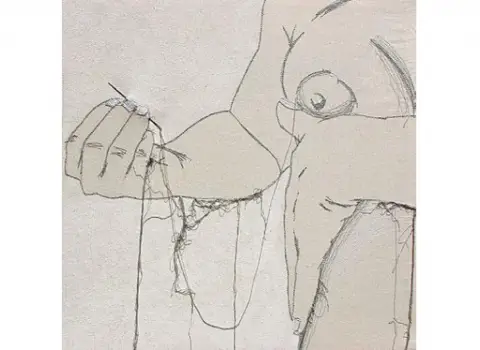
How does working with embroidery affect the conceptual aspect of your work?
Embroidery is a feminine technique used to “decorate, to make things beautiful” but with the addition of existential themes one can change it to be a very strong expression and language. This easily occurs because of the required patience and the silence in the rite of working.
In my work the canvas became a metaphor for the skin and the thread leaves an indelible relief that can be caressed – it is like if our life experiences became precious elements embroidered onto our skin.
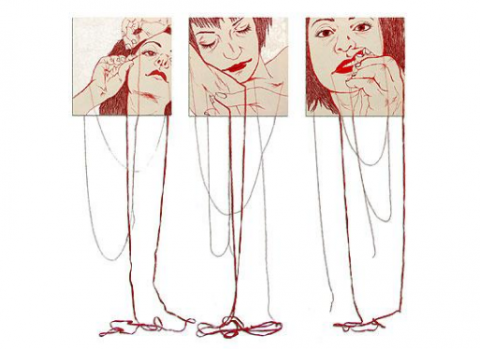
How did you come to making the body of work mend of me?
The needle doesn’t hurt, the needle mends, closes, sews the wounds, builds an identity, for this reason I do believe it is a perfect way to understand the sense of life. No changes come without pain. If you can overcome the pain (of a loss, a failure, a delusion), then you will have a change. My work encourages the viewer to not be afraid to pass the limit of themselves.
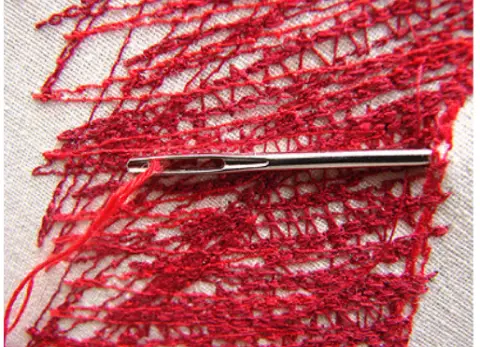
There is a violence to your work, can you talk about this? Have you ever had a negative response due to this?
Unfortunately my work is often misunderstood. People see women sewing themselves and assume they are inflicting pain but in fact the meaning is exactly the opposite. My women are not inflicting themselves of any pain, their expressions are serene and not suffering.
My women are “re-building” their own identities using embroidery as a feminine artistic language. Because the history of female identity ties to this technique it continues to maintain characteristics of feminine nature: the care, the waiting, and methodic work.
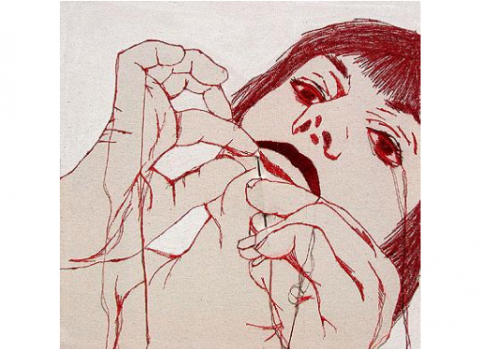
Your work alludes and critiques issues of body image, self-mutilation, perhaps plastic surgery. Can you speak to this interest and how it came to your work?
I have never thought of mutilations. I work on the meaning of intellectual integrity that goes through the body and not on self-devastation. I am not interested in plastic surgery, this is not something that concerns me and my work.
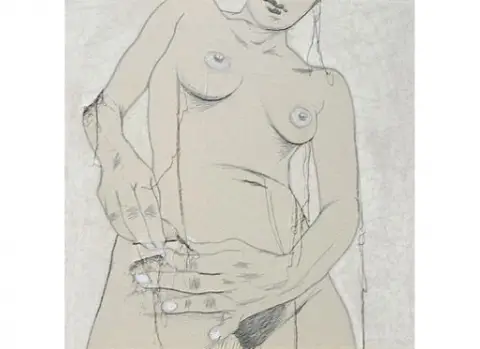
What do you struggle with most as an artist?
You must work very hard to be an artist; experimenting with a lot techniques and languages but also keeping clear in your mind the message you want to express. My path follows a very intimate and existential path. I speak with people about their life experiences and I process and transform their stories in precious embroideries. For this reason sometimes it is hard to explain that there is much more beauty in a scar then in a perfection. The scar tells about a life experience, a perfect body can only tell about its shape.
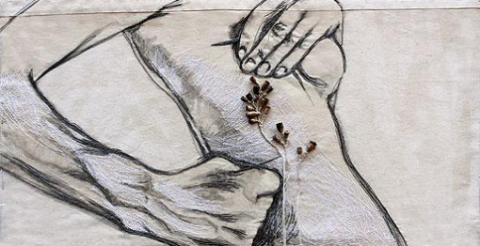
How has your work evolved since you first began working with stitching?
Before embroidery I was very attracted to expressionist painting. My work has evolved significantly after starting to work in embroidery – the thread allows me to enlarge my perception. I have let go of limits in my way of working allowing my creativity to work upon a canvas, a wall, or doing installations and videos.
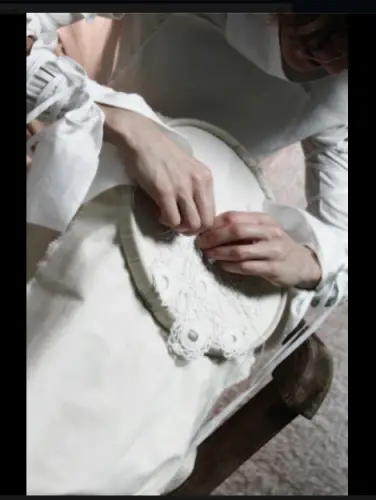
What is the next direction or step for your work?
At the moment I am working on a video where I show a woman dressed in white embroidering phrases onto her “skin” that represent predictions.
I am also creating some embroidered books that I call catalogues of existences. For these I asked some people, who are close to me, to send me pictures of parts of their bodies ( scars, moles etc.) I drew them and then embroidered them.
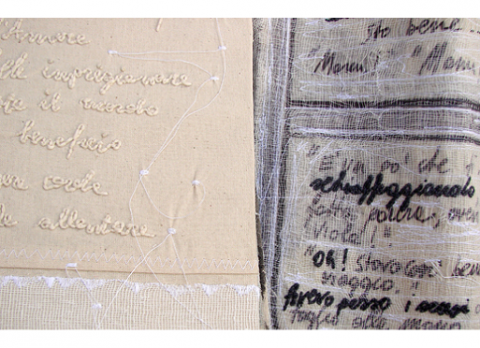
It is the imperfection of our skin that makes us unique. It is the beauty of imperfection that I love to express in my work. Through the process of embroidery every imperfection becomes wonderful.
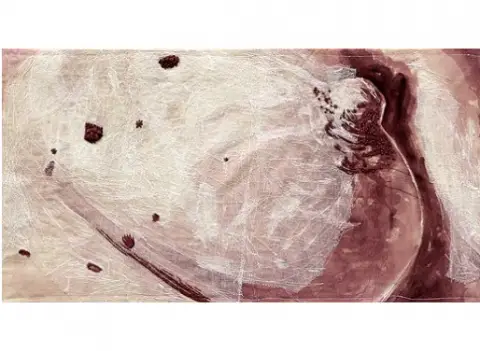
Describe your studio and studio practice.
My studio is not that big but very bright. It is located in a small lane of the historical center of a small town in Tuscany named Sansepolcro, the home of the renaissance painter, Piero Della Francesca.
The studio is divided into two: one side for embroidering, which I keep very tidy and clean, the other for drawing on the canvas’ that I will embroider in the future, it is much messier and full of colors.
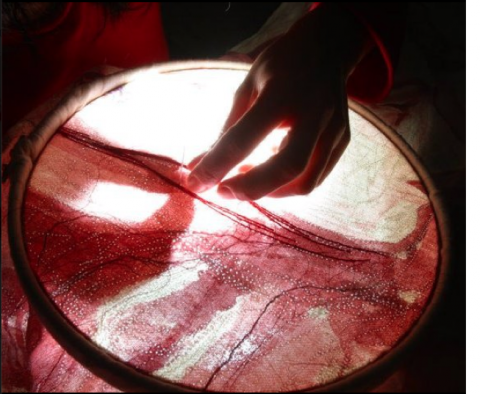
Who are the 3 most influential people to you?
To be honest I have many more than 3 and they are almost all women artists.
At the moment who come to my mind is:
Louise Bourgeois, Tracy Emin, Anselm Kiefer
…but the real list would be much too long.
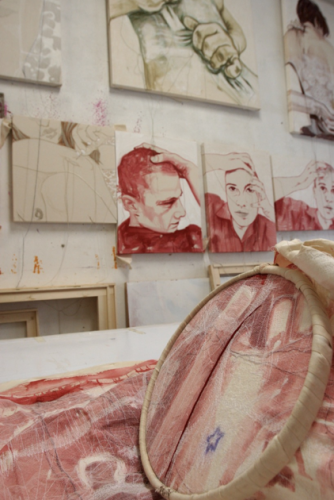
What is your favorite thing to do other than art?
To teach Art History to my students
Your favorite book and why?
At the moment I am reading some books of Peter Handke, from his writings I am findings a lot of inspiration for my new works. But my favorite is J.L. Borges.
Coffee or tea?
Coffee 100%
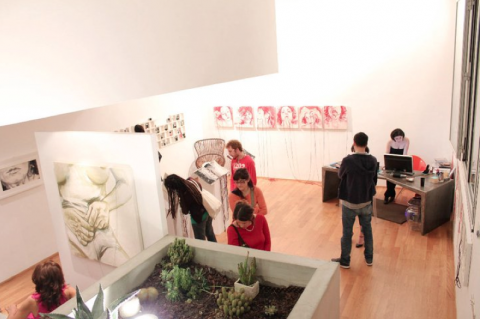
Where can we see your work?
On my web site www.ilariamargutti.com or on my facebook page.
I also have some forthcoming catalogues which will be available in Italy in 2012.
You can also download catalogues of solo exhibitions from my website.
Thank you so much to Ilaria. I loved getting to know more about her gorgeous work. To you all don’t forget about my current call for work.

